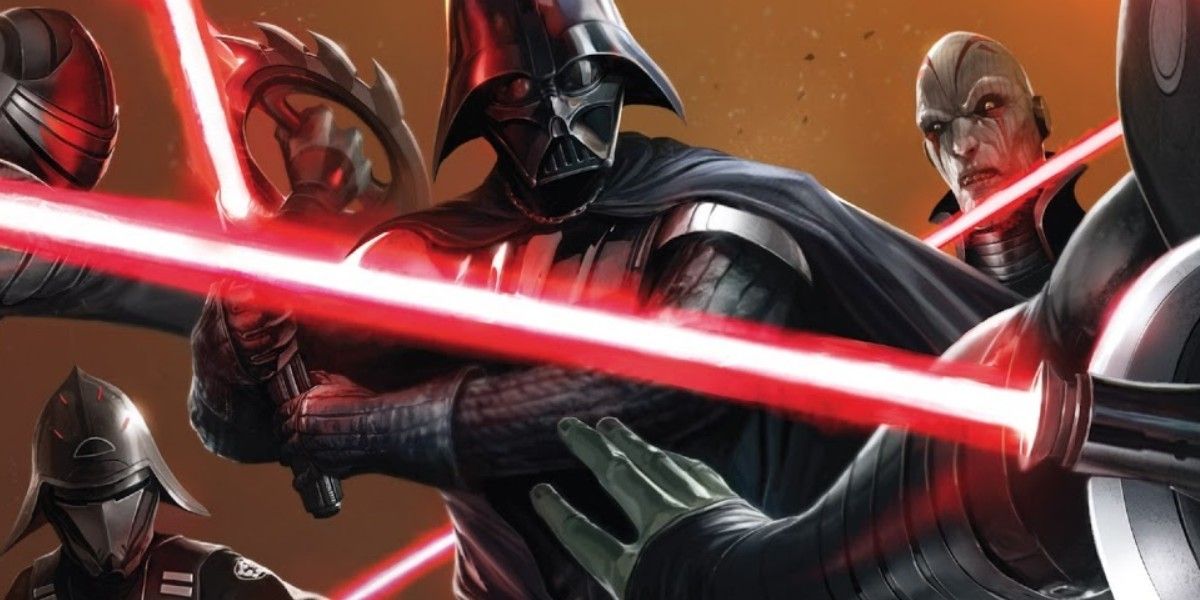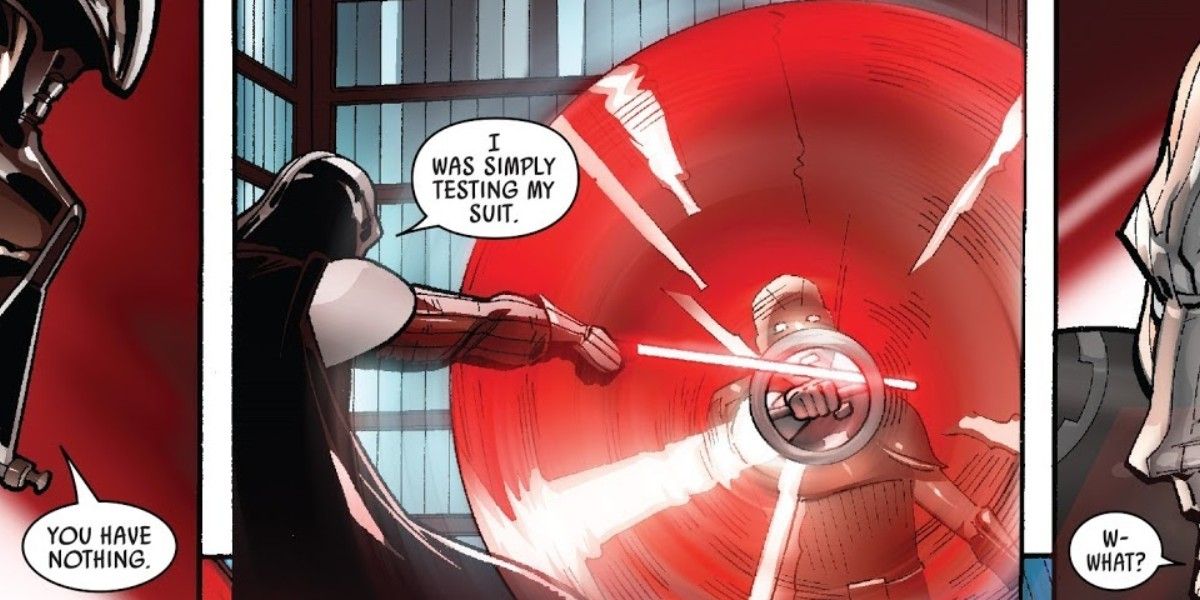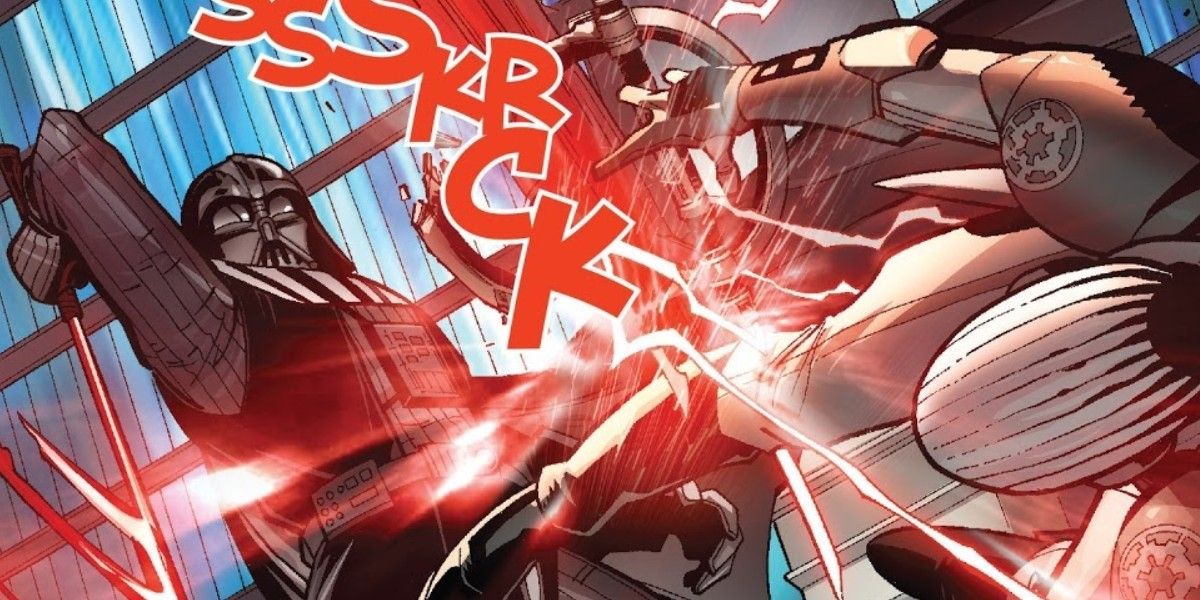Star Wars' Darth Vader is one busy Sith Lord after the events of Revenge of the Sith. Almost as soon as he dawns the robotic armor, Palpatine puts him to work creating the underpinnings of his new Galactic Empire -- and Vader quickly proves why he's such a powerful villain when he exploits a weakness in the Inquisitors' weapons.
In Charles Soule and Giuseppe Camuncoli's Darth Vader #6, he's tasked with training the Emperor's new team of Jedi killers, the Inquisitors. While Vader and Palpatine's Inquisitorius program creates a unit of feared soldiers, major flaws in their training mean they can never become the Jedi assassins they hope to be.
Vader's first encounter with an Inquisitor is a test by the Emperor. Palpatine instructs the Grand Inquisitor to explore the Jedi Archives, but he doesn't inform Vader. Vader confronts the intruder in the archives while investigating. A lightsaber duel quickly breaks out and the Grand Inquisitor shows off his technologically advanced, double-bladed lightsaber that can wind up and whirl like a deadly laser helicopter blade.
While visually impressive, Vader instantly finds a weakness in the weapon. He simply thrusts the tip of his blade into the weapon's rotors and it shatters, much like what happens when you throw a stick in a bike wheel's spokes. Upon Vader's defeat of the Grand Inquisitor, Emperor Palpatine reveals his intentions and introduces Vader to the Inquisitorius program -- "a blade that will cut the Jedi infection from the galaxy once and for all."
Vader's first impression of the Inquisitors isn't good. Not only does he easily defeat their leader in battle, he doesn't like how the Emperor is training potential replacements under his nose -- but that's not actually the point of the Inquisitorius program.
Palpatine would never teach the Inquisitors the true power of a Sith because that would create potential rivals to the throne. Not only does he want to keep them weaker than the Sith, but he also devises a plan to keep them susceptible by controlling them through their inherent weaknesses, like the Grand Inquisitors' thirst for knowledge. The Jedi never allow him into the archives, but Palpatine does, which easily gains his allegiance.
The Inquisitors are plucked from the ranks of failed Jedi around the time Order 66 is executed. Palpatine believes that with Vader's assistance, they can train the Inquisitors into warriors skilled enough to kill Jedi, but keep them weak enough to never challenge the Sith's seat of power. This is why the Sith install weaknesses in the Inquisitors: To keep them as nothing more than obedient soldiers.
However, in the long run, these weaknesses never allow the Inquisitors to defeat the Jedi who survived Order 66. Palpatine believes he can have Jedi killers and obedient soldiers at the same time, but this proves to not be the case. After all, any Jedi who was clever enough to survive Order 66 is resourceful beyond measure. It's highly unlikely the Sith's disadvantaged Force wielders can defeat any of the Order 66 survivors.
Fans get proof of the Inquisitors' weaknesses in Star Wars Jedi: Fallen Order. Kel Kestis defeats two Inquisitor sisters during his journey and while he's obviously an adept Force user on the path to become a Jedi Master, he's far from the strongest Jedi the Inquisitors face.
It's obvious there's no way they could defeat true Jedi Masters. Vader could defeat the Inquisitors with one hand tied behind his back and he was defeated in battle by a few different Jedi. If Palpatine would have sent his Inquisitors to kill, say, Kirak Infil'a, they would have been slaughtered in a few panels. Palpatine's refusal to train the Inquisitors under the proper Sith protocol spells their doom from the start and keeps them from becoming true Jedi killers.



